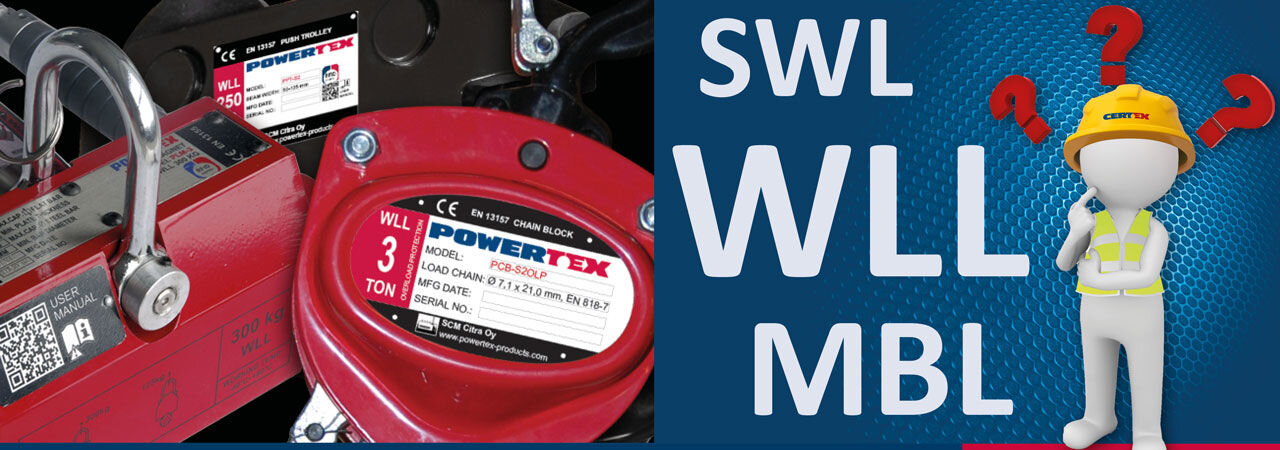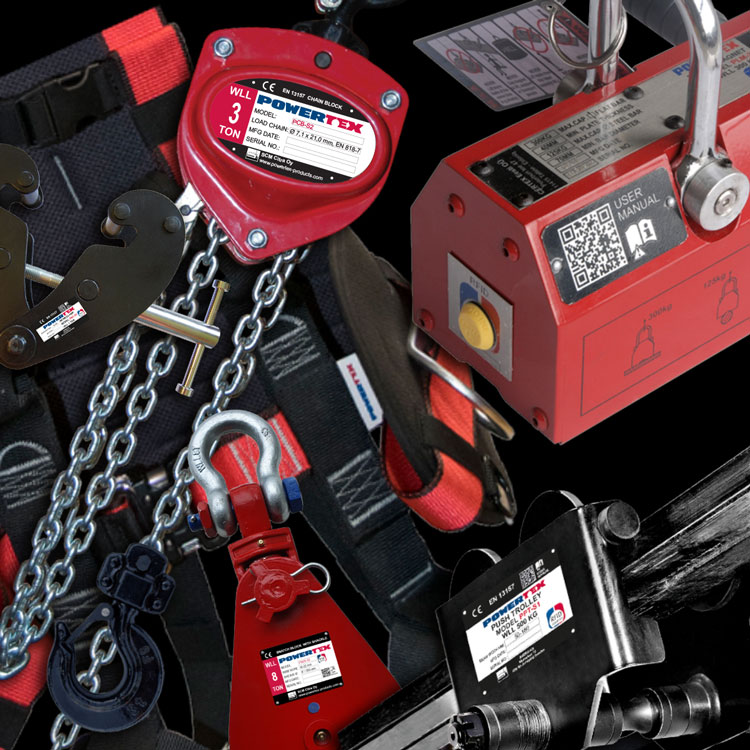

This guide gives a brief description of the terms WLL, SWL and MBL
There are many terms to be aware of in the lifting industry, and knowing what they mean is important to making a safe selection of lifting equipment. Here we explain the difference between some terms
WLL (working load limit)
WLL stands for Working Load Limit. It is a crucial term in the lifting industry. The WLL represents the maximum load that a non-fixed lifting attachment (such as a shackle, sling, or hook) is designed to lift under specific conditions specified by the manufacturer. Adhering to these limits ensures safe usage of lifting equipment.
SWL (safe working load)
SWL stands for Safe Working Load. It was commonly used in the past, but due to legal considerations, it has largely been replaced by WLL (Working Load Limit). Nowadays, SWL corresponds to WLL for all lifting equipment under the crane hook, including hooks, shackles, and other lifting gear.
Minimum breaking strength, MBL/MBF"
MBS (Minimum Breaking Strength), also known as Minimum Breaking Load (MBL), represents the load or force that must be achieved before the lifting equipment is at risk of breaking or experiencing a change that could lead to load failure.
Safety factor (SF)
The safety factor represents the ratio between the Working Load Limit (WLL) and the Minimum Breaking Load (MBL).
It indicates how much stronger the equipment is compared to what it is designed to lift.
Manufacturers specify the safety factor in standards for each lifting range.
Commonly, the safety factor falls within the range of 4:1 to 7:1.
The formula for calculating the maximum load is: WLL = MBL / SF.
Remember, understanding safety factors ensures responsible and secure use of lifting equipment, promoting safety in lifting operations.
Proof load
The proof load is the load to which the manufacturer has exposed the product during a proof load test.
This test ensures that the equipment can withstand a specified load without permanent deformation or failure.
The minimum proof load is typically stated in the current industry standards.
It serves as a safety measure to verify the equipment’s integrity before actual use.
Caution! Always follow the manufacturer’s guidelines and industry standards to ensure safe lifting practices.
Remember, understanding proof loads and adhering to safety guidelines are essential for safe and efficient lifting operations.

Summary:
| WLL | Maximum load that the non-fixed lifting attachment is designed to lift under the conditions specified by the manufacturer. |
| SWL | Formerly a common term but has today been replaced by WLL for all lifting equipment under the crane hook. The term is still used in the offshore/marine industry. |
| MBL | Indicates the minimum load or force to be achieved before the lifting equipment risks breakage or any change that causes the load to loosen. |
| Nominal capacity | Used for cranes, hoists and winches to indicate what they may safely lift. |
| Safety factor | How much stronger the equipment is compared to what it is designed to lift. |
| Proof load | The load/burden the manufacturer has exposed the product to during testing |
Do you have any questions?
If you have any additional questions, please contact us and we will answer you.


